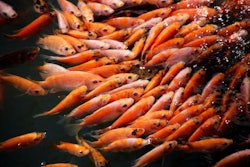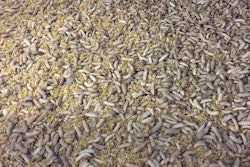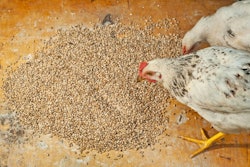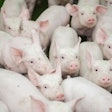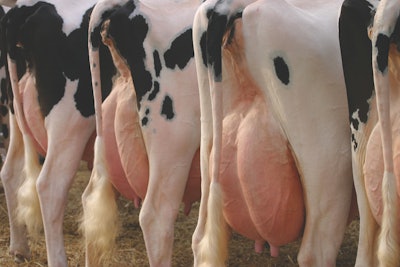
Research explores protein level variations for maintaining dairy production
The supply of metabolizable protein to the small intestine of dairy cattle corresponds to the summation of the microbial protein synthetized in the rumen, the undegradable protein from the consumed feeds and the endogenous protein. In general, practical dairy formulations of protein tend to be superior to the recommendations of the different dairy nutrition models.
Among the factors that justify this mismatch can be cited:
- animal distress during certain periods when intake is reduced, e.g. due to hot weather, and protein catabolism is increased;
- the variability among groups (e.g. animals of different ages, lactation status, genes, etc.) and therefore different potentials of production and intake capacity; and
- the use of security factors because of quality differences in the feed used in the formulation of the diets.
These reasons are complemented by the fact that, while a protein deficit significantly reduces cow intake and production, its excess does not affect the former and has limited effects on the latter.
Energetic cost of feeding protein in excess
Feeding protein above requirement requires the use of additional energy to metabolize excess nitrogen and excrete it in the form of urea. A recent study published in the Journal of Dairy Science estimated the energetic cost of feeding excess dietary nitrogen to dairy cows.
The researchers used a data set containing 1,110 indirect calorimetry observations from 64 experiments conducted at the United States Department of Agriculture (USDA) Energy and Metabolism Laboratory. The data set was composed of individual daily nutrient balance and indirect calorimetry observations from lactating dairy cows.
The results show nitrogen fed above requirement:
- Increases heat production (+4.1 to +7.6 kcal/g of excess N)
- Decreases retained energy (−4.2 to −6.6 kcal/g of excess N)
- Reduces milk gross energy (−52 to −68 kcal/g of excess N).
Since protein is one of the most expensive nutrients in lactation diets and an excess of nitrogen supply may reduce energy availability in the animal, much research has focused on feeding low-protein diets, mainly to late-lactation cows whose metabolizable protein requirements are lower than cows in early lactation.
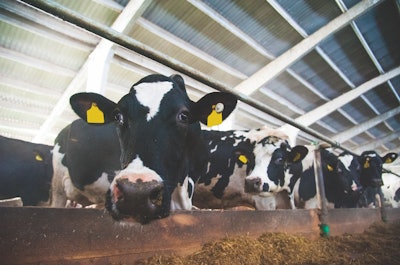 Practical protein formulations tend to be better than the recommendations of dairy nutrition models. (Grigorenko | iStockPhoto.com)
Practical protein formulations tend to be better than the recommendations of dairy nutrition models. (Grigorenko | iStockPhoto.com)Low-protein dairy cow diets
A recent study published in ANIMAL evaluated the effects of feeding a reduced protein diet on the productive performance of late-lactation cows. Using a split-plot design over four periods of two weeks, the researchers fed late-lactation cows with two diets that contained 17 or 12% protein in a dry matter (DM) basis. The diets contained corn silage as the only forage (79.5% DM) and a soybean meal mix as the main protein supplement.
Surprisingly, cows receiving the low-protein diet maintained production performance. Although decreasing protein level from 17 to 12% reduced slightly DM intake and milk fat yield (0.8 and 0.04 kg/day, respectively), milk production (25.8 kg/d), milk fat concentration (4.27%), and protein concentration and yield (3.15% – 0.81 kg/d) were not affected by diet. Moreover, the 12% protein diet drastically improved nitrogen use efficiency (31 vs. 22%).
In summary, this study demonstrates that dairy cows at the end of the lactation fed corn silage-based diets with low protein content can keep performance, at least for periods of two weeks. Although these results are very promising, they should be taken with caution because the testing periods were very short (only two weeks).
Incrementally reduced protein diets
Another study conducted at the University of Wisconsin–Madison measured performance of late-lactation cows fed diets with incremental reductions in protein levels. In this case, the researchers fed pregnant cows with four diets that contained 16.2, 14.4, 13.1, or 11.8% protein in DM basis for 12 weeks. The diets contained 65% forage, 13.5% corn, and 21.5% concentrate mix in which soybean meal was replaced with soy hulls for reducing protein level. Decreasing protein levels from 16.2% to 11.8% reduced intake and yield lineally:
- Dry matter intake (24.2, 23.8, 23.8, and 22.7 kg of DM/day in cows fed the 16.2, 14.4, 13.1, or 11.8% CP diets, respectively)
- Milk production (31.8, 31.4, 29.0, and 25.5 kg/day) and energy-corrected-milk yield (35.7, 35.0, 32.8, and 28.6 kg/d)
- Milk protein (1.12, 1.06, 0.98, and 0.82 kg/d) and milk fat yield (1.31, 1.28, 1.23, and 1.09 kg/d)
- Feed efficiency (1.47, 1.47, 1.37, and 1.26 kg ECM/kg DMI)
- Milk urea nitrogen (13.3, 10.1, 8.05, and 5.97 mg/dL)
Interestingly, while reducing protein from 16.2 to 11.8% reduced milk yield within one week of feeding the experimental diets, the reduction in milk performance in the 13.1% protein diet was observed after four weeks.
References available upon request.


